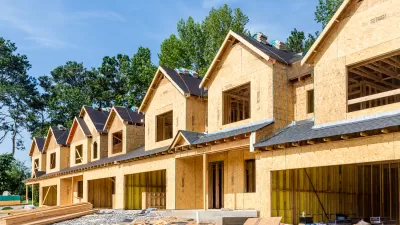After a flurry of announcements regarding blanketing cities with free Internet access, the actual forecast for these wireless networks looks rather bleak.
"...Municipal Wi-Fi schemes have been struggling to make ends meet. EarthLink, which runs networks in Philadelphia and New Orleans, recently admitted that "the Wi-Fi business as currently constituted will not provide an acceptable return." This week the firm said it would lay off 900 workers, including the head of its municipal Wi-Fi division, the future of which is now in doubt."
The root of the problem is that city-wide Wi-Fi, which relies on outdoor radio transmitters, does not provide good access inside buildings, since it uses weak signals which do not always penetrate thick exterior walls. Proponents of the technology also underestimated the number of transmitters that would be needed to provide blanket coverage. Most networks deployed between 2004 and 2006 used between 20% and 100% more nodes than expected, which pushed up costs.
Worse, the networks that have been completed have attracted few users. Taipei's city-wide WiFly system, the largest such network in the world, was reckoned to need 250,000 regular subscribers by the end of 2006 in order to break even, but had attracted only 30,000 by April 2007. America's biggest network, around Tempe, Arizona, was aiming for 32,000 subscribers, but had only 600 in April 2006 and has not provided figures since."
FULL STORY: Reality bites

Pennsylvania Mall Conversion Bill Passes House
If passed, the bill would promote the adaptive reuse of defunct commercial buildings.

Planning for Accessibility: Proximity is More Important than Mobility
Accessibility-based planning minimizes the distance that people must travel to reach desired services and activities. Measured this way, increased density can provide more total benefits than increased speeds.

Fair Housing Cannot Take a Back Seat to ‘Build, Baby, Build’
If we overlook fair housing principles in the plan to build US housing back better, we risk ending up right back where we started.

LA Metro Board Approves New 710 Freeway Plan
The newest plan for the 710 corridor claims it will not displace any residents.

Austin’s Proposed EV Charging Rules Regulate Station Locations, Size
City planners say the new rules would ensure an efficient distribution of charging infrastructure across the city and prevent an overconcentration in residential areas.

Making California State Parks More Climate-Resilient
A recently released report offers recommendations for keeping state parks healthy and robust, including acquiring additional land for conservation and recreation.
City of Costa Mesa
Licking County
Barrett Planning Group LLC
HUD's Office of Policy Development and Research
Mpact Transit + Community
HUD's Office of Policy Development and Research
Tufts University, Department of Urban and Environmental Policy & Planning
City of Universal City TX
ULI Northwest Arkansas
Urban Design for Planners 1: Software Tools
This six-course series explores essential urban design concepts using open source software and equips planners with the tools they need to participate fully in the urban design process.
Planning for Universal Design
Learn the tools for implementing Universal Design in planning regulations.























